About the Ophthalmology Residency Program
Clinicals
Extensive clinical experience is one of the hallmarks of the Loyola Ophthalmology Residency program. Residents are given increasing responsibility during the three-year curriculum.
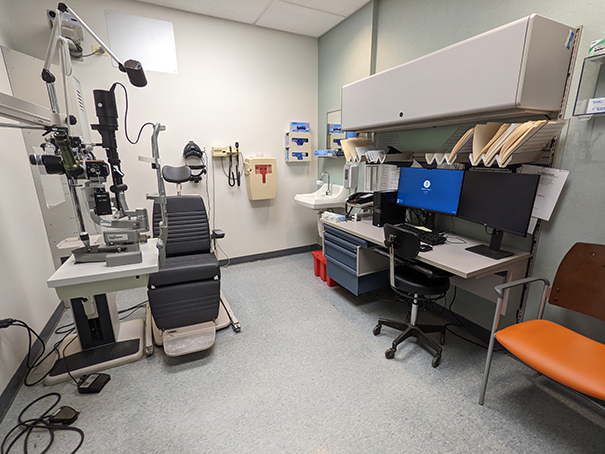
They care for patients in exceptional facilities at Loyola University Medical Center and the Loyola Outpatient Center, as well as nearby Edward Hines, Jr. VA Hospital.
Throughout their training, residents participate in the department’s busy consultation service, which performs about 2,000 inpatient and E.R. consultations a year.
Most consults take place at the medical center, although Loyola faculty also provide ophthalmology consultation for several primary and tertiary care facilities in the area.
First-Year Responsibilities
First-year residents develop fundamental skills in diagnosis and medical management of common ocular diseases and refine their refracting and technical examination skills during their first year.
After completing a one week orientation that includes presentations, a formal refraction/optics course and reduced clinical and on-call responsibilities, full rotations begin. The schedule includes six months at Hines VA and six months at Loyola.
One Three-Month Rotation at Edward Hines Jr. Veterans Administration Hospital
One three-month rotations are spent at Hines, where each resident is given primary responsibility for patients, with faculty available for consultation and guidance. Hines has two full time as well as 13 part-time faculty ophthalmologists, representing all subspecialities.
During these rotations, residents spend four days a week in the outpatient clinic; rotate through the weekly fluorescein angiography/fundus photography service for one-half day a week; participate in weekly subspecialty clinics which include retina, cornea, glaucoma and plastics; and perform minor surgery one-half day a week.
First-year residents also evaluate patients from the Central Blind Rehabilitation /Center at Hines, an experience that provides significant exposure to unusual ocular pathology. This inpatient facility, one of only ten of its kind in the country, offers a 6-18 week program for blind and severely vision-impaired veterans that includes training in the use of a cane, the activities of daily living, manual skills, low-vision, electronic devices for mobility and communication, courses in Braille and other skills.
Three Three-Month Rotations at Loyola University Medical Center
First-year residents also spend nine months at Loyola participating in general and subspecialty clinics. They will have a cornea/contact lens rotation over three months, a retina/uveitis rotation over three months and a glaucoma/neuro-ophthalmology rotation over three months.
Second-Year Responsibilities
Second-year residents continue to gain experience in the microsurgical management of patients and receive in-depth training in the subspecialties. Their schedule includes four three-month rotations, two of them at Loyola, two at Hines.
Two Three-Month Rotations at Loyola University Medical Center
One of the rotations is spent primarily in the pediatrics / strabismus service and additional experience is gained in the medical and surgical management of strabismus. Residents also provide subspecialty care on campus at the Loyola Outpatient Center. Residents spend a half-day each week in the ultrasound service during this rotation. The first Tuesday of each month of this rotation is spent in electrophysiology service at the Ear and Eye Infirmary at the University of Illinois (Chicago).
During the other three-month Loyola rotation, residents participate primarily in the oculoplastics service with high surgical volume and inpatient consultation service.
Two Three-Month Rotation at Edward Hines Jr. Veterans Administration Hospital
One of the three-month rotations at Hines is a clinic rotation where residents provide general and subspecialty care. This rotation involves seeing clinic patients five days a week, learning important patient management skills and also assisting with training first-year residents.
The other three month rotation at Hines is a surgical rotation where residents complete cataract surgeries as a primary surgeon. They also evaluate patients in clinic on days when they are not in the OR.
Third-Year Responsibilities
Third-year residents spend three months at Loyola and nine months at Hines. They have increased responsibility for patient care. They are primarily in the OR and are responsible for the follow up care of all their surgical patients. They are also primarily responsible as a team leader for the Ophthalmology Grand Rounds which take place every Wednesday. Third-year residents are responsible for Basic Clinical and Science Course series lectures, journal club and M & M presentations.
One Three-Month Rotation at Loyola University Medical Center
This Loyola rotation involves the resident as primary or secondary surgeon for most outpatient surgical procedures, five days a week. The remaining time is spent in the general and subspecialty clinics.
Three Three-Month Rotations at Edward Hines Jr. Veterans Administration Hospital
The three Hines rotations include intensive medical and surgical experience, in all subspecialities where third-year residents serve as primary surgeon three days a week and have primary responsibility for post-operative management. This experience allows residents to master their surgical techniques and have complete follow-up care of their patients. Two days a week, third-year residents perform laser procedures, and participate in general and subspecialty clinics.
Surgical Experience
Supervised surgical experience is an important aspect of the Loyola Ophthalmology Residency Program. Coupled with the Hines V.A. Hospital, Loyola is well-known for it’s high surgical volume.
Refractive Surgery
Residents participate in excimer laser refractive procedures during their third year.
Rotations
Year One
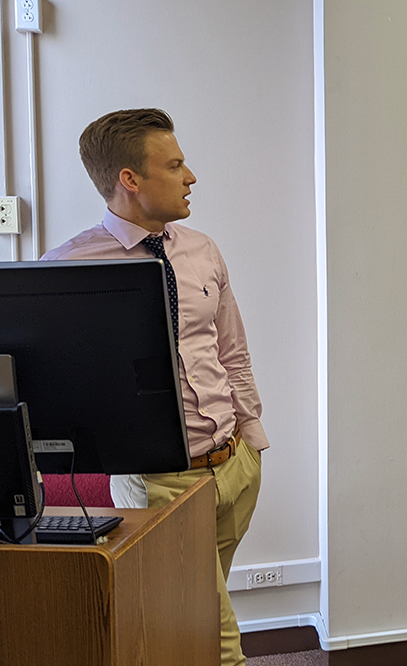
Three Months at Loyola: Retina/Uveitis Rotation
- Assist retina surgery: one day a week
- Retina clinics
Three Months at Loyola: Cornea/Contact Lens Rotation
- Subspecialty clinics
Three Months at Loyola: Glaucoma Rotation
- Subspecialty clinics
Three Months at Hines VA: Comprehensive
- IVFA/ fundus photography: ½ day per week
- Assist third-year residents in OR: Monday
- Minor Procedures
- General/Subspecialty Clinics: Tuesday, Thursday
Year Two
Three Months at Loyola - Pediatrics
- Pediatrics/Strabismus: surgical rotation
- Subspecialty Clinics
- Inpatient Consult Service
- Ultrasound: 1/2 day per week
- Dr. Fishman/electrophysiology clinic (UIC) one day per month
Three Months at Loyola - Oculoplastics
- Subspecialty Clinic
- Subspecialty Surgical Rotation
- Inpatient Consult Service
Three Months at Hines VA – Comprehensive Two Rotation
- General/Subspecialty Clinics
- Surgery one day per week
Three Months at Hines VA – Hines Consult Rotation
- General/Subspecialty Clinics
- Director of general clinic
- Consult service
Year Three
Three Months at Loyola
- Primary/secondary surgeon: Monday, Tuesday, Wednesday, Thursday, Friday
- Subspecialty clinics
- Refractive Surgery
Nine Months at Hines VA
- Primary surgeon at VA
- Lasers
- General/subspecialty clinics
Call
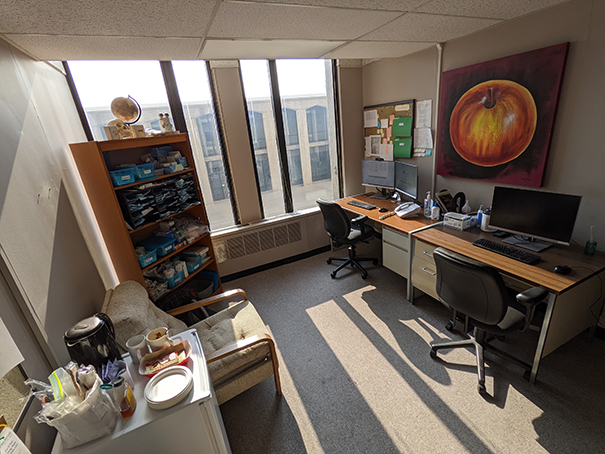
Each first and second year resident has responsibility for taking call from home with a pager. When called, the resident is expected to handle the call promptly. This means that the resident must be available and reachable for the time he/she is on call.
The first year residents are assigned to one weekday call (Friday) per week. Each first year resident is assigned to one weekend call every 4 weeks. Each second year resident covers one weekday call per week (Monday through Thursday).
When on call, the resident provides care at both hospitals. It is the responsibility of the resident seeing the patient on call to make appropriate recommendations for follow up evaluation by an Attending.
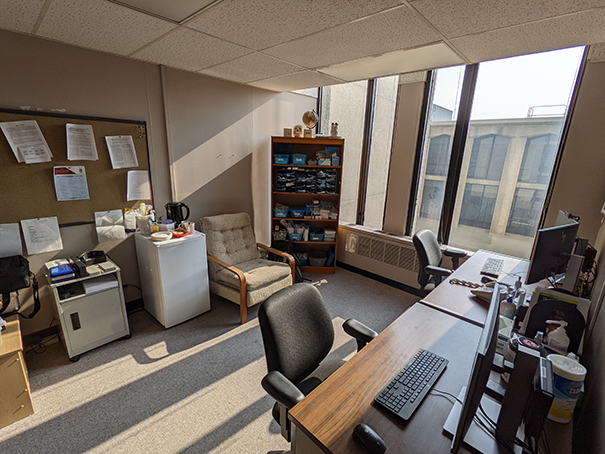
The resident also must personally inform the Attending faculty about the identification and location of patients who were seen so that the Attending may review and countersign the consultation documentation.
The senior residents take back-up call every four weeks for one week. They are available by telephone to advise the resident on call, and should be called when any patient is admitted.
An Attending faculty member is always available to consult by telephone and will come to evaluate any patient the resident determines needs such attention.
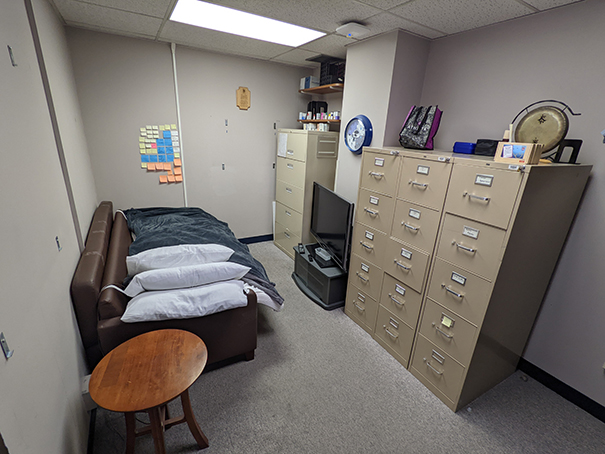
The resident on call can contact the Attending directly at any time. A complete schedule of attending physician coverage is determined for the succeeding six months and is posted in the department. This also shows the best way to contact the Attending.
Any disposition of a patient with respect to admission and/or surgery should be made only after consultation with the Attending.
In situations where the decision to admit is not that of ophthalmology (e.g. patient with poly-trauma with eye injury,) the Attending should be notified if surgery is thought to be indicated for the eye injury and should indicate the action to be taken by the resident.
All patients seen in the emergency room must be recorded on their personal consultation/emergency room log sheet.
The attending on call is ultimately responsible for patients seen by the residents. The patients seen on call may provide welcome educational experience for the senior resident. It is important therefore that first and second year residents on call contact their third year for all "serious" surgical and non-surgical cases.
Any "serious" surgical and non-surgical case which includes a patient requiring a minor surgical procedure, must be discussed with the on call attending by the third-year resident. Prior to this policy, attendings were notified at the discretion of the resident on call.
Emergency Eye Care
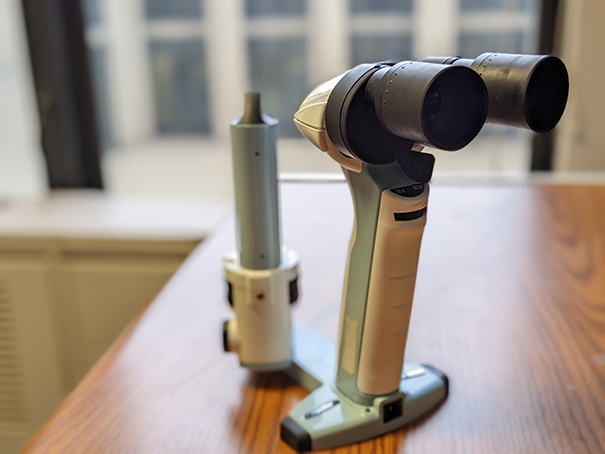
- Familiarize yourself with the Hines Eye Clinic, the Loyola Emergency Room, Consult Room and the Burn Unit.
- All patients examined in the Consult Room should be documented in the login book on the desk. The Hines Eye Clinic is locked. Security will let you in or you may check out a key from the surgical staff office on the 7th floor (get a key).
- All residents will need a valid Hines ID to allow access to the VA after hours.
- All patients seen in the Emergency Room should have a complete and fully documented eye exam (with x-rays if metallic foreign body or fracture is suspected.)
- All patients must have follow-up appointments the next day or Monday. Recommend compiling your own emergency eye kit including: Diamox tablets, Pilocarpine, Timoptic, Fluorescein strips, antibiotics, ophthaine, and dilating drops, lid speculum, cotton tip swabs, eye patches, etc.
- You may be called to the floor and have nothing available otherwise. (All are available in Consult Room.) Make sure you have your own direct, indirect ophthalmoscope working with a good penlight with blue filter with you on call. (All available in Consult Room at LUMC and at Clinic at Hines.)
- Retain a copy of the pink consult sheet for filing and/or follow up by an attending that day or on Monday, if seen as an emergency room patient over the weekend. Completed consults are filed by you in a binder kept by the fax machine (Room 2609) in the administration office If you are at Hines, give the pink sheet to the resident stationed at LUMC.
- All consults sheets must be filed within 36 hours
- Complete eye exam includes:
- History, medications, allergies, previous eye history.
- Vision with/without glasses and pinhole near and distance vision.
- Glass prescriptions - not on call.
- Pupils.
- Extraocular muscles/motility.
- Visual fields
- External eye exam - lids, lashes, conjunctiva
- Slit lamp exam cornea, anterior chamber, iris, lens.
- Tension and time of exam.
- Fundus - type of dilation used, if any, and description of disc, macula, vessel and periphery.
- Complete ER log sheet for all patients.
Holiday Call Policy: Loyola/Hines
When Loyola has a holiday and Hines does not, the Hines resident on call is not responsible for call at Loyola.
- Residents at Loyola take call.
- The name of the resident(s) on call at Loyola must be listed on the monthly call schedule.
- When Hines has a holiday and Loyola does not, the Loyola resident on call is not responsible for call at Hines.
- Residents at Hines take call.
- The name of the resident(s) on call at Hines must be listed on the monthly call schedule.
The last two days in June:
- Current third-year residents are back-up
Salary and Benefits
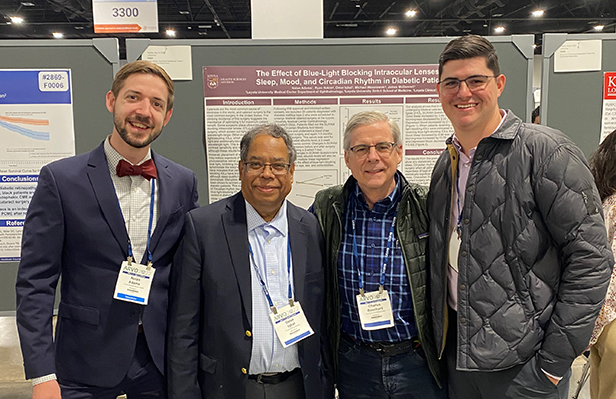
- Competitive salary
- Medical and dental insurance
- Long-term disability insurance
- Life insurance
- Worker’s compensation
- 12 sick days per year
- Four weeks vacation per year
- Five days leave for job or fellowship interviews during the third year
- Parental leave
- Educational leave
- Free meals when on call
- Access to the medical center’s 60,000 square foot health & fitness center
Educational Leave
The Department will provide five business days of educational leave per year. In addition, you may be eligible for educational leave if you are a first author on an ARVO abstract. The Chief Resident at Loyola may never be away for more than one week at a time.
